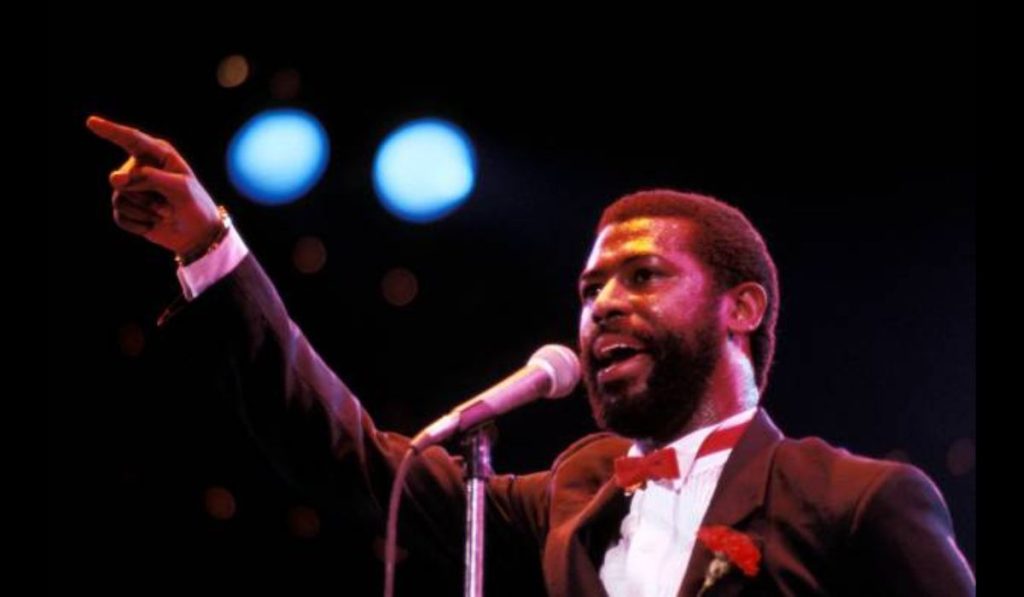Teddy Pendergrass was an iconic figure in the world of soul and R&B music, known for his powerful vocals, sensual lyrics, and undeniable stage presence. Throughout his career, which spanned from the 1970s until his untimely death in 2010, Pendergrass captivated audiences with his soulful ballads and seductive love songs. However, amid his widespread popularity and success, questions surrounding his sexuality have persisted, with rumors and speculation swirling about whether the legendary crooner was gay.
The Birth of an Icon
Born Theodore DeReese Pendergrass in 1950 in Philadelphia, Pennsylvania, Teddy’s journey to stardom was paved with determination and an unwavering love for music. His early years were spent honing his craft in local church choirs and talent shows, eventually leading him to join Harold Melvin & the Blue Notes in the 1970s.
It was during his tenure with the Blue Notes that Pendergrass truly began to captivate audiences with his smooth baritone voice and magnetic stage presence. His powerful lead vocals on hits like “If You Don’t Know Me by Now” and “Wake Up Everybody” propelled the group to new heights and solidified Pendergrass as a rising star in soul music.
The Lady’s Man Persona
As Pendergrass embarked on his solo career in the late 1970s, he quickly established himself as a consummate ladies’ man, both on and off the stage. His music was often characterized by seductive lyrics and sensual themes, with songs like “Close the Door,” “Turn Off the Lights,” and “Love T.K.O.” becoming instant classics and cementing his reputation as a master of romantic ballads.
Pendergrass’s on-stage persona was equally tantalizing, with his provocative dance moves and sultry demeanor leaving audiences swooning. His concerts were known for their electrifying energy and palpable sexual tension, further fueling the perception of Pendergrass as a quintessential ladies’ man.
The Rumors and Speculation
Despite his overtly masculine persona and apparent appeal to female fans, rumors about Pendergrass’s sexuality began to circulate within the industry and among his dedicated fanbase. Some pointed to his close relationships with male friends and associates, while others speculated about his personal life behind closed doors.
These rumors were further fueled by the tragic events of 1982 when Pendergrass was involved in a devastating car accident that left him paralyzed from the waist down. The accident suddenly halted his career and public life, shrouding his personal affairs in even more mystery and speculation.
The Evidence: For and Against
In exploring the question of whether Teddy Pendergrass was gay, it is essential to examine the available evidence and accounts from those who knew him best. On one hand, some vehemently deny any suggestion of Pendergrass being anything other than heterosexual.
His longtime friend and collaborator, Kenny Gamble, has consistently dismissed the rumors, stating that Pendergrass was a “ladies’ man through and through.” Similarly, many of his female fans and admirers have spoken of his undeniable charm and appeal, further solidifying his reputation as a romantic icon.
On the other hand, some claim to have inside knowledge or personal experiences that suggest Pendergrass may have been gay or bisexual. Some former associates and industry insiders have hinted at his alleged relationships with men, though concrete evidence remains elusive.
It is worth noting that during Pendergrass’s era, the stigma surrounding homosexuality in the entertainment industry was particularly strong, and many public figures chose to keep their personal lives private or maintain a heterosexual persona for fear of backlash or career repercussions.
The Impact of Speculation
Regardless of the truth behind Teddy Pendergrass’s sexuality, the persistent rumors and speculation have undoubtedly impacted his legacy and the way he is remembered by fans and the broader public. For some, the mere suggestion of him being gay has tarnished their perception of the soulful crooner, a reaction rooted in societal biases and prejudices.
However, for others, the exploration of Pendergrass’s sexuality has shed light on the complexities of human identity and the need to embrace diversity and acceptance. In an industry that has historically struggled with issues of representation and inclusivity, the discussion surrounding Pendergrass’s sexuality has opened the door for broader conversations about LGBTQ+ visibility and the importance of creating spaces for artists to express their authentic selves.
The Enduring Legacy of a Soul Icon
While the debate surrounding Teddy Pendergrass’s sexuality may never be fully resolved, one thing remains certain: his impact on the world of soul and R&B music is undeniable. His rich baritone voice, mesmerizing stage presence, and timeless hits have cemented his place as a true icon of the genre.
From the electrifying energy of his early performances with Harold Melvin & the Blue Notes to the seductive ballads that defined his solo career, Pendergrass’s music has touched the lives of millions, transcending boundaries of race, gender, and sexuality.
Perhaps the most enduring aspect of Pendergrass’s legacy is his ability to connect with audiences on a deeply emotional level. His songs spoke to the universal experiences of love, heartbreak, and desire, resonating with listeners regardless of their personal backgrounds or identities.
In the end, the speculation surrounding Teddy Pendergrass’s sexuality may remain a topic of discussion and debate, but it should not overshadow the immense talent and artistry that he brought to the world of music. His contributions to the soul and R&B genres will forever be etched in history, and his music will continue to inspire and captivate future generations.
Whether he was a heterosexual icon or a trailblazer living his truth in a less accepting era, Teddy Pendergrass’s legacy is one of passion, authenticity, and the power of soulful expression. As we celebrate his life and music, let us embrace the diversity of human experience and remember that true artistry transcends labels and societal conventions, touching the very essence of what it means to be human.

